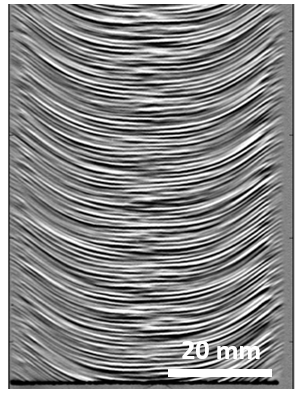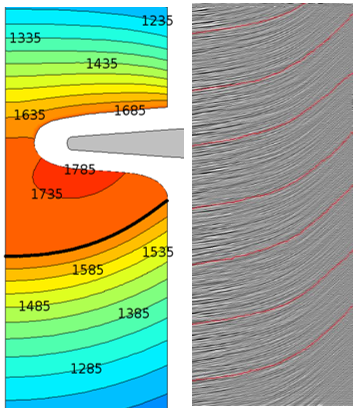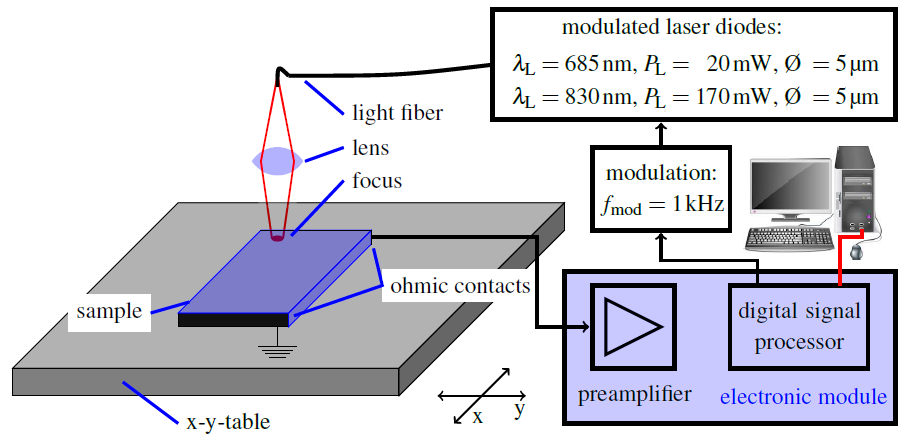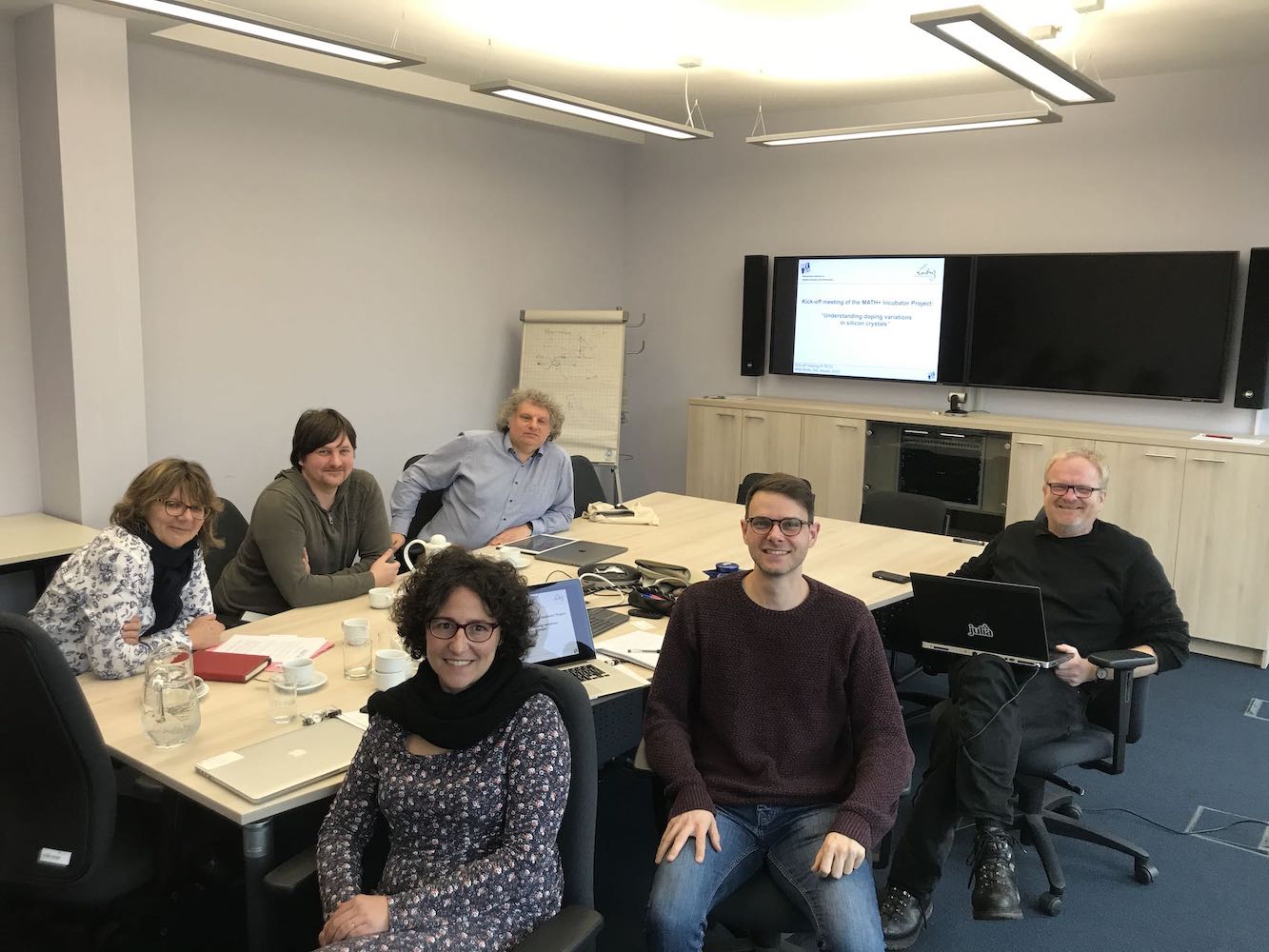MATH+ IP-TB-3 project: Understanding doping variations in silicon crystals
| Project heads: | Natasha Dropka, Patricio Farrell, Nella Rotundo |
| Staff: | Stefan Kayser |
| Funding period: | January 2020 - December 2020 |
| Application area: | Nano- and optoelectronics (WIAS), Incubator Project (MATH+) |
Overview
The Leibniz-Institut für Kristallzüchtung (IKZ) develops an affordable crystal growth technique to grow pure crystals, the the hybrid growth technique SiGrEt. It combines the advantages of two well-established techniques. On the one hand, Chochralski grown crystals (95% market share) are cheap to produce but systematically introduce oxygen and carbon into the crystal, thus limiting their quality severely. On the other hand, floating zone crystals (5% market share) produce purer crystals, however, severely increase the production cost.
The lateral photovoltage scanning (LPS) method measures local doping variations (inhomogeneities in the semiconductor crystal) in a non-destructive fashion. LPS excites the semiconductor crystal with a laser, creating a voltage difference at the sample edges which is proportional to the local doping variation. This voltage difference can be measured. The hope is that one can infer the doping profile from the voltage difference. However, from a mathematical point of view one has to solve an inverse problem. An efficient solution of this inverse problem – a long-term and difficult task – requires a fast and reliable solution of the forward problem (where the voltage difference enters as a boundary condition).



Tasks
We provide numerical input to understand the forward problem. To this end, we replace inflexible blackbox code with a physics preserving finite volume discretization to tackle unsolved problems such as slow convergence for low doping densities, parameter reduction and suitable anisotropic grids.
Once we have a flexible, open-source and physics preserving discretization at our disposal, we address the following three scientific research questions:
- Currently, low doping concentrations result into many parameter embeddings within the Newton solver for the nonlinear discretization. This leads to unacceptably high simulation times on the order of weeks. With our flexible framework we will analyze what causes the slower convergence and if necessary directly apply problem-dependent preconditioners to reduce the computation time.
- We study which of these parameters can be safely neglected without compromising the solution.
- The LPS method uses a highly localized laser beam. The active region is a lot smaller than the bulk semiconductor. To incorporate the different spatial scales in the simulation, anisotropic grids are indispensable. The current grid is anisotropic but generated by COMSOL. We will replace the meshing with an open-source software package such as TetGen.
Highlights
- 15th May 2020: Abstract accepted to NUSOD 2020 conference
- 11th-13th of March 2020: Poster presented at the German Conference on Crystal Growth, Munich
- 24th January 2020: Talk within ddfermi seminar (WIAS)
- 23rd January 2020: Talk within internal seminar (IKZ)
- 9th January 2020: Kickoff meeting

Kickoff meeting 2020


